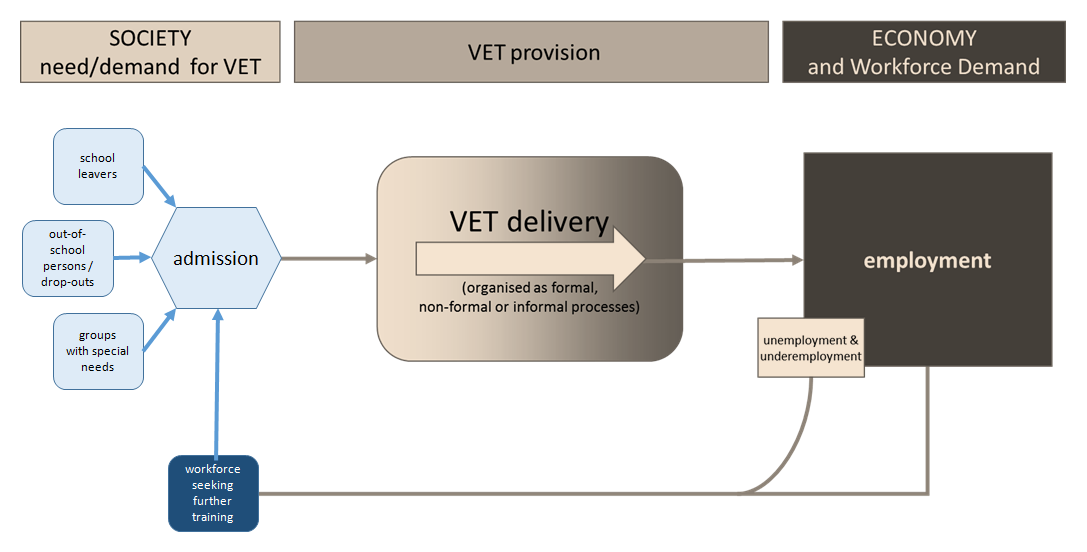It is important to highlight that not all VET programmes are necessarily open to all. On the contrary: in all our partner countries in development cooperation the capacity of the VET systems is significantly lower than the number of young people who need some kind of training in order to get a decent job or gainful self-employment. Therefore, formal and informal mechanisms exist that regulate and limit access to VET – and often exclude the majority of those in need of training.

There are many types of access barriers. These may take the form of educational levels and/or student fees that are often requested, in particular for high-quality training. They also include issues such as the regional distribution of training centres or their timetables and course durations, which are not affordable for many disadvantaged people who have to earn their living as well as undertaking training. Moreover, gender or ethnic discrimination may play a role.
The following illustration depicts a typical exclusion scenario and suggests mitigation measures
A careful analysis of such access barriers is therefore another important step in planning the reform of a VET system.
